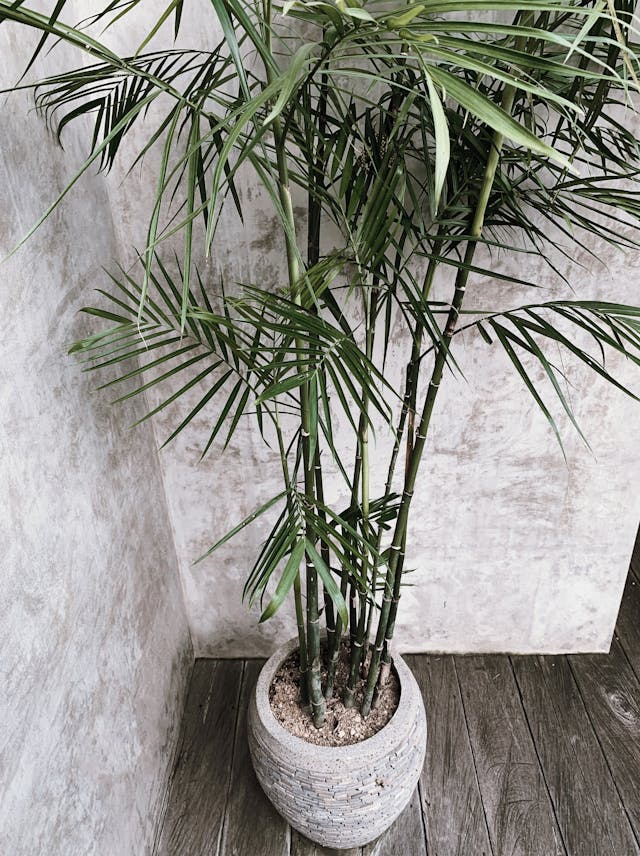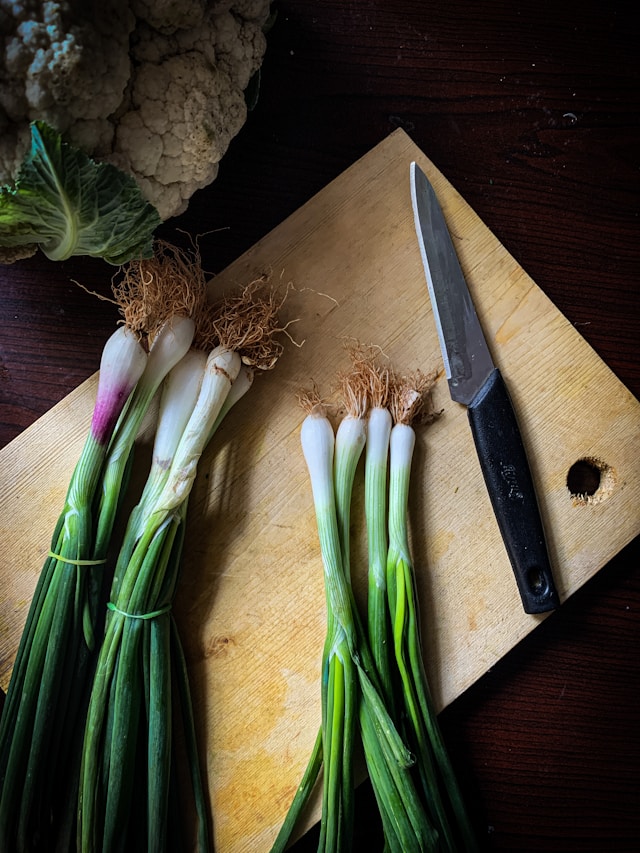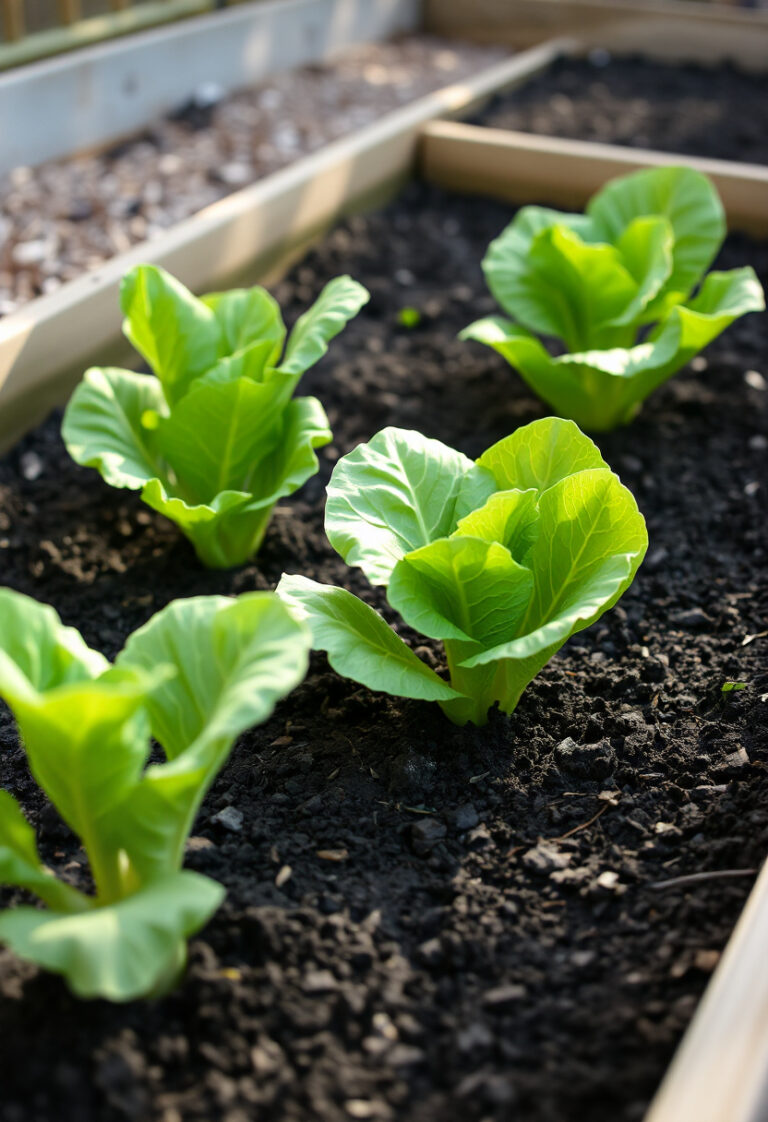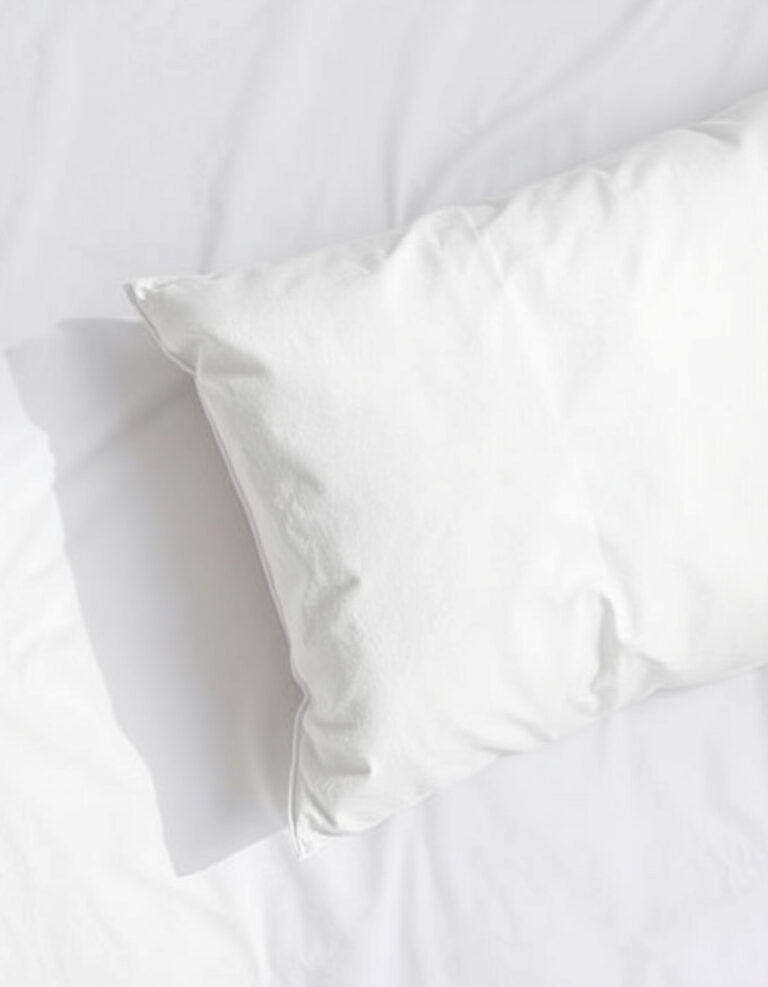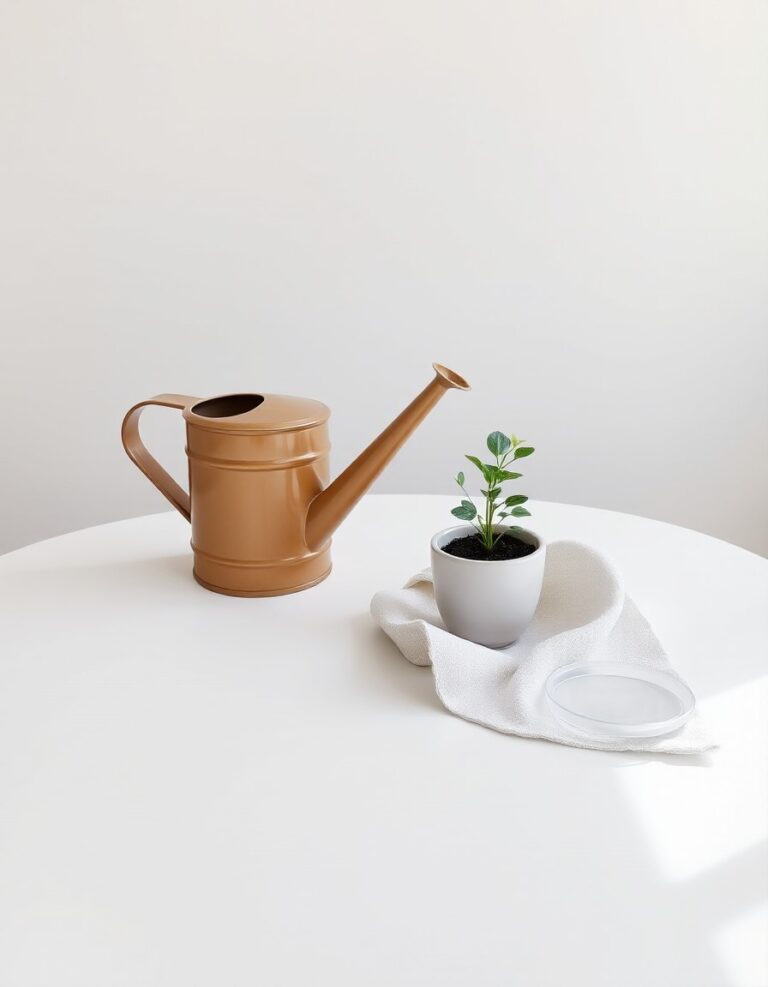A whitewashed brick wall adds texture and a soft, worn-in look to a space without feeling too bold or heavy. It’s a practical way to update exposed brick, reducing the raw, industrial vibe while keeping the brick’s natural surface visible. Whether you’re working with an older home or a more modern layout, a whitewashed brick wall can create a calm, neutral backdrop that works well with a range of design styles—from rustic and farmhouse to contemporary and minimalist.
What Makes Whitewashed Brick Appealing?
Whitewashed brick walls create a soft, muted aesthetic that brightens spaces without the stark contrast of solid white walls. The technique involves applying a translucent white paint or lime wash that allows the natural brick texture and color variations to show through. The result is a surface with depth and subtle sophistication that works beautifully in modern, rustic, farmhouse, and contemporary settings.
Let’s explore 17 innovative ways to incorporate whitewashed brick walls into your home for that coveted soft look.
1. Whitewashed Brick Fireplace Focal Point
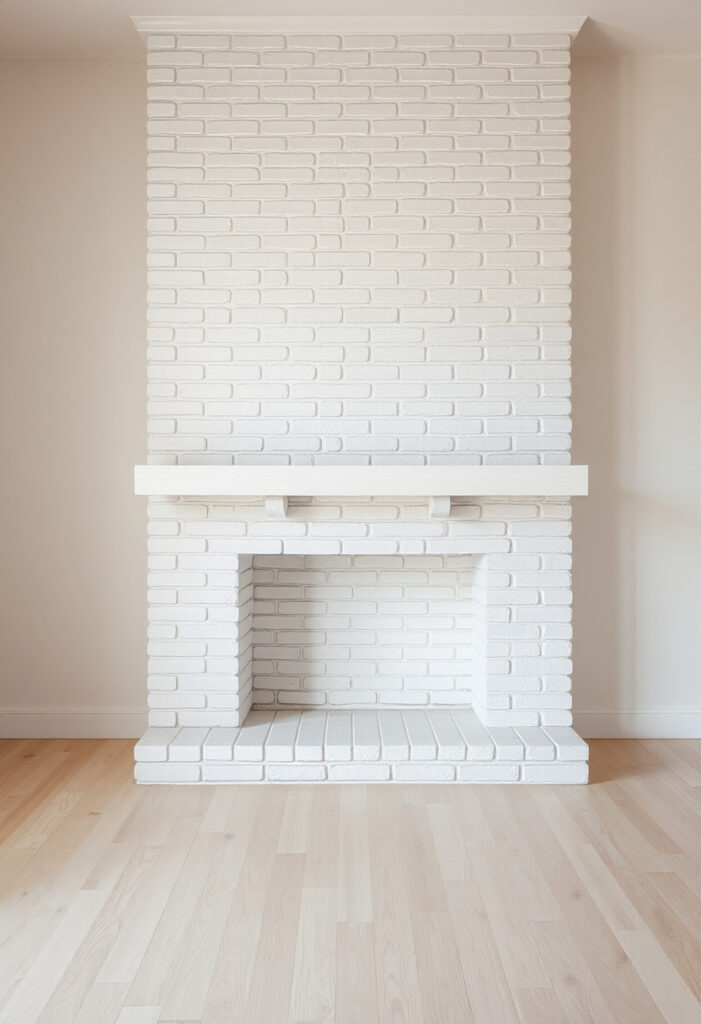
Transform your fireplace into a stunning centerpiece by whitewashing the surrounding brick. This treatment maintains the textural quality of brick while softening its appearance, creating a warm, inviting focal point that doesn’t overwhelm the room. The subtle variations in the whitewashed surface catch light beautifully throughout the day, adding dimension to your living space.
2. Kitchen Backsplash
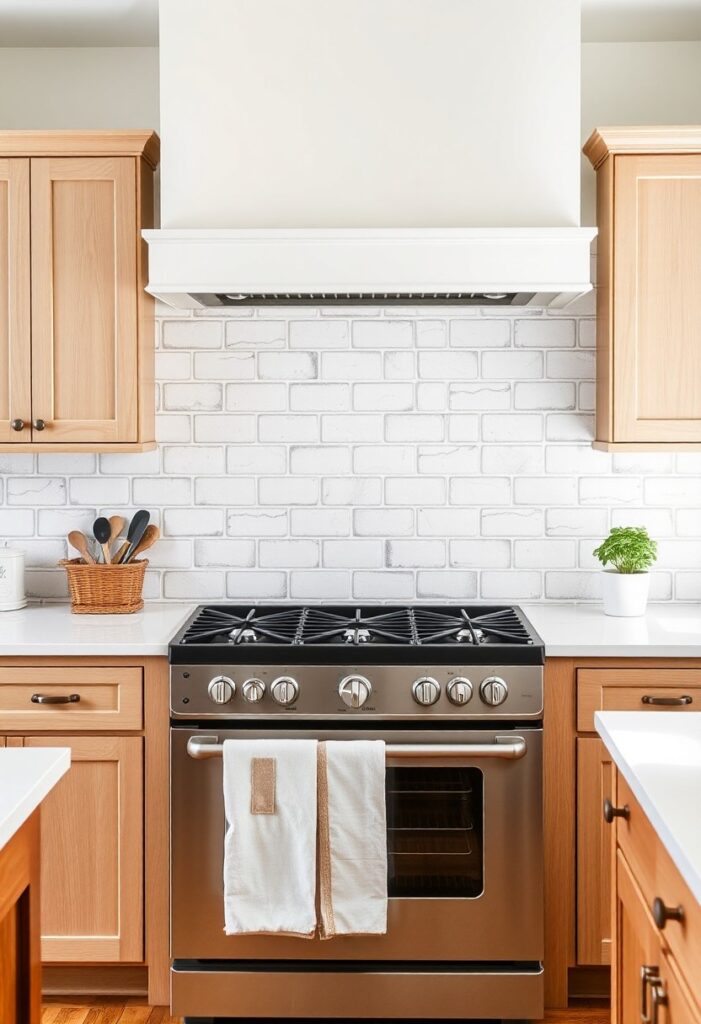
A whitewashed brick backsplash brings texture and interest to kitchens while maintaining a clean, bright atmosphere. Unlike solid white subway tiles, whitewashed brick offers natural variations that hide splashes and splatters more effectively. This option works exceptionally well in farmhouse or transitional kitchens, providing a practical yet visually appealing surface behind cooking areas.
3. Accent Wall in Living Spaces

Create architectural interest in otherwise plain rooms with a whitewashed brick accent wall. This technique draws the eye without dominating the space, allowing your furniture and decor to stand out against the textured backdrop. The soft, dimensional surface adds subtle sophistication without requiring bold colors or patterns.
4. Whitewashed Exterior Brick
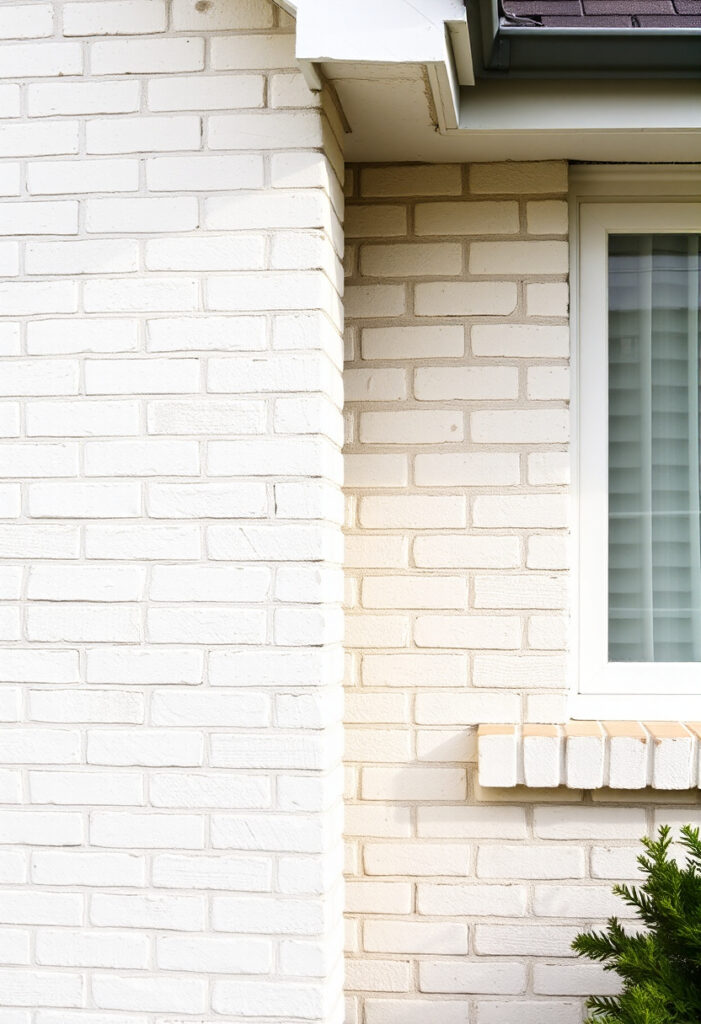
Modernize an older brick home by whitewashing the exterior. This treatment preserves the historical character while updating the appearance, creating a fresh look that highlights architectural details. Exterior whitewashing allows the natural weathering patterns of brick to show through subtly, creating a lived-in, established appearance with contemporary appeal.
5. Bathroom Statement Wall
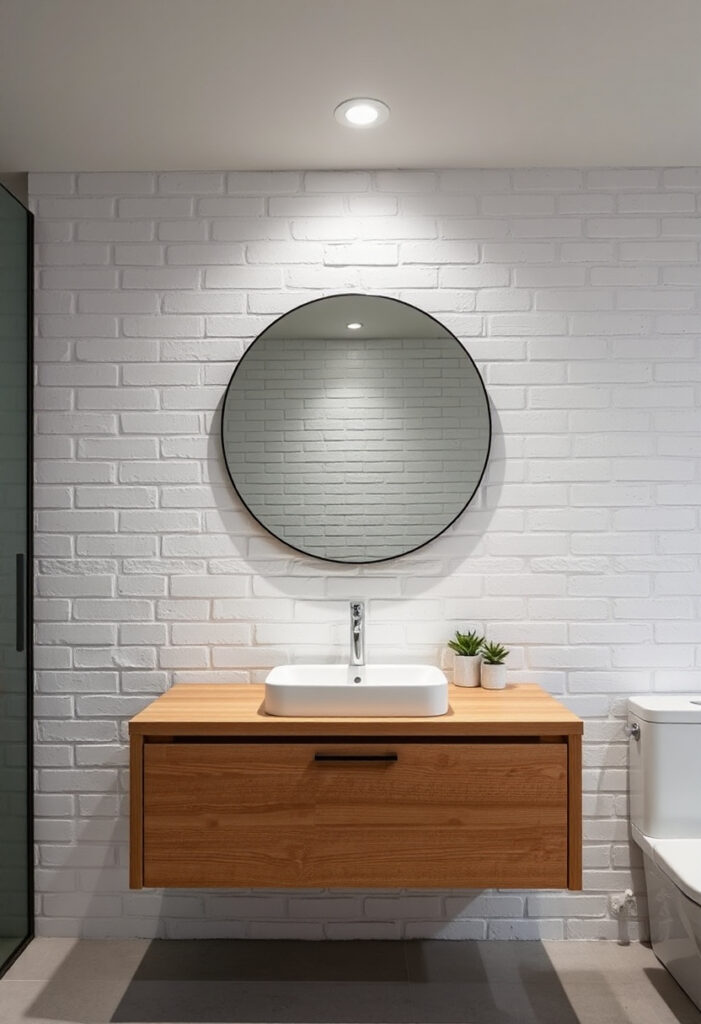
Introduce unexpected texture in bathrooms with a whitewashed brick wall behind vanities or in shower areas (properly sealed, of course). The whitewashed finish resists moisture better than raw brick while adding visual interest to typically smooth bathroom surfaces. This technique creates a spa-like atmosphere with architectural substance.
6. Whitewashed Brick in Dining Areas
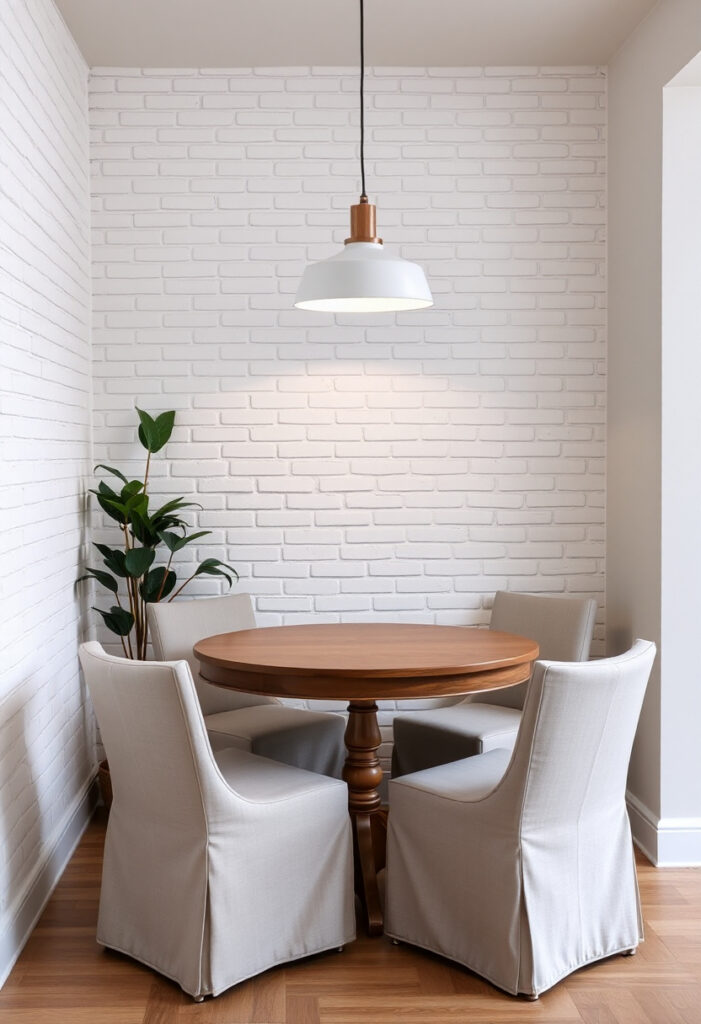
Frame your dining space with a whitewashed brick wall that creates an intimate atmosphere without darkening the room. The soft surface diffuses light beautifully, especially with strategically placed sconces or pendant lighting. This treatment adds sophistication to meal times without the formality of dark-colored walls.
7. Home Office Background
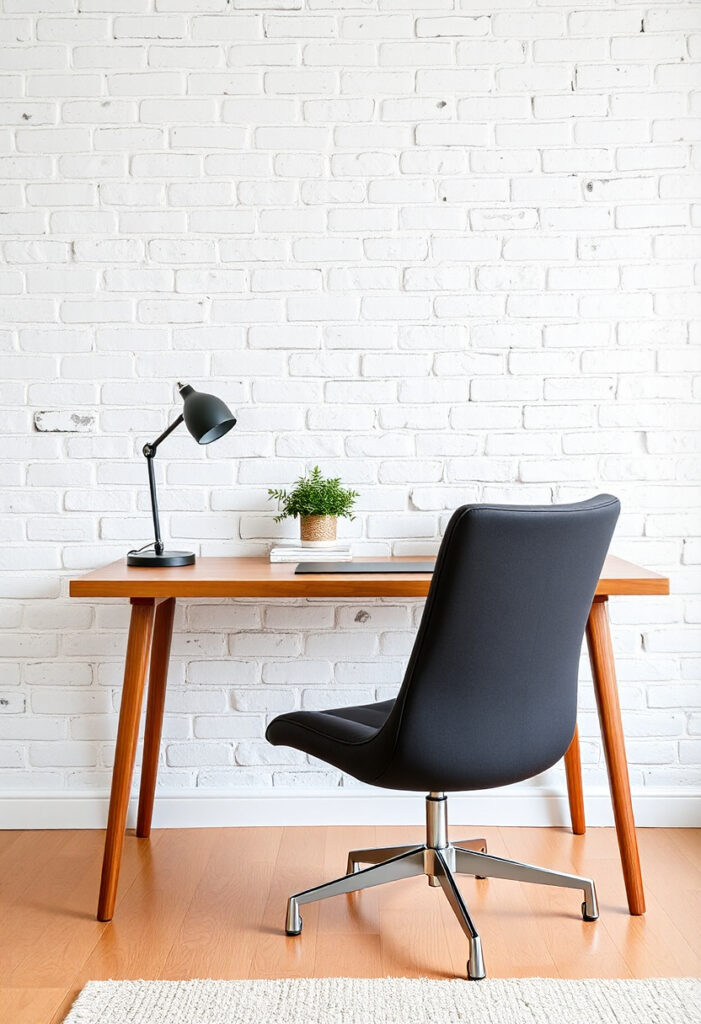
Create a professional yet inviting backdrop for video calls with a whitewashed brick wall in home offices. The textured surface adds interest without distraction, providing depth that flat-painted walls can’t match. This treatment works particularly well in converted spaces where existing brick can be highlighted rather than covered.
8. Whitewashed Brick Hallway
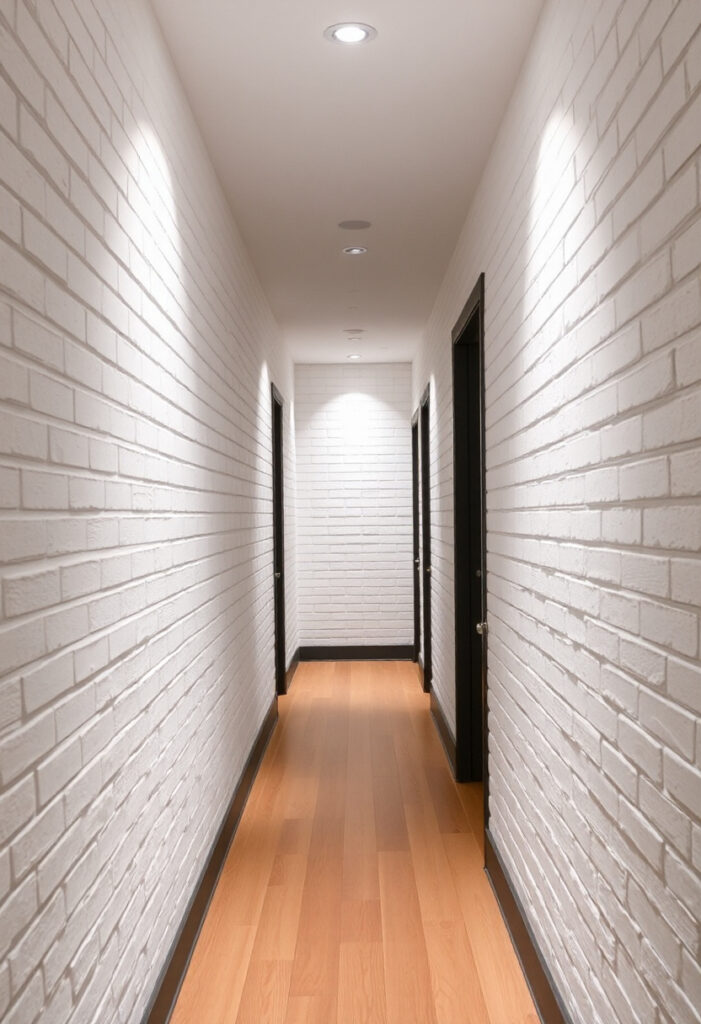
Transform narrow hallways from forgettable transitions into architectural features with whitewashed brick walls. The texture catches light and shadow, creating visual interest in typically overlooked spaces. This treatment makes corridors feel more substantial while maintaining brightness in areas that often lack natural light.
9. Curved Whitewashed Brick Wall Features
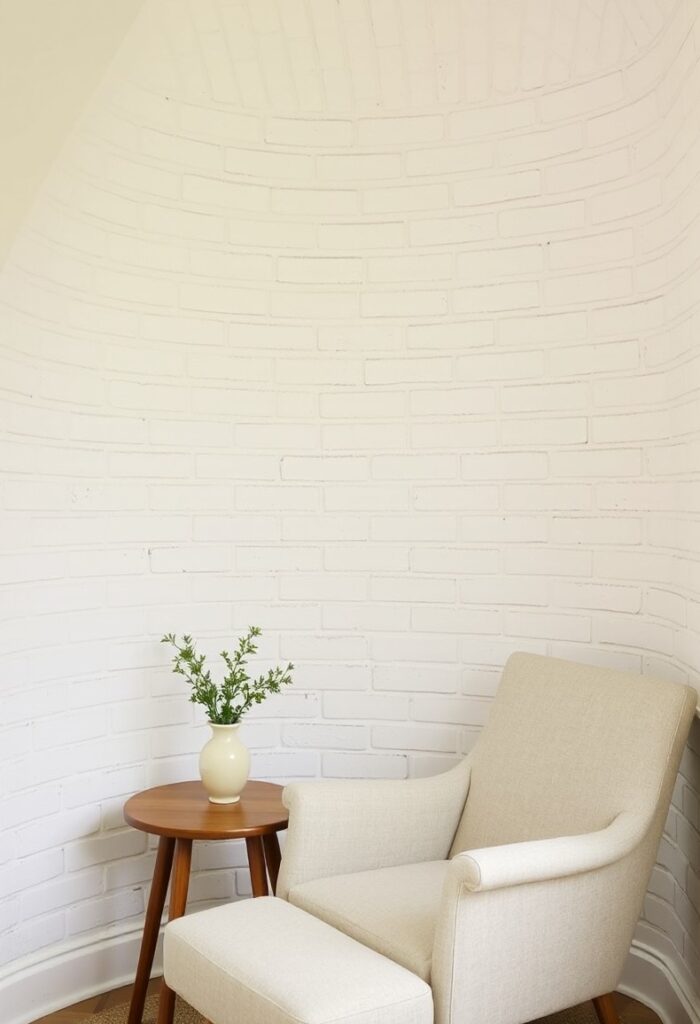
Incorporate curved whitewashed brick walls to create flowing transitions between spaces. These architectural elements add sophisticated movement to linear rooms while the whitewashed finish keeps the curves from feeling overwhelming. This distinctive feature transforms ordinary layouts into custom-designed spaces with architectural significance, creating natural divisions without blocking light or sightlines.
10. Whitewashed Brick Combined With Wood Elements
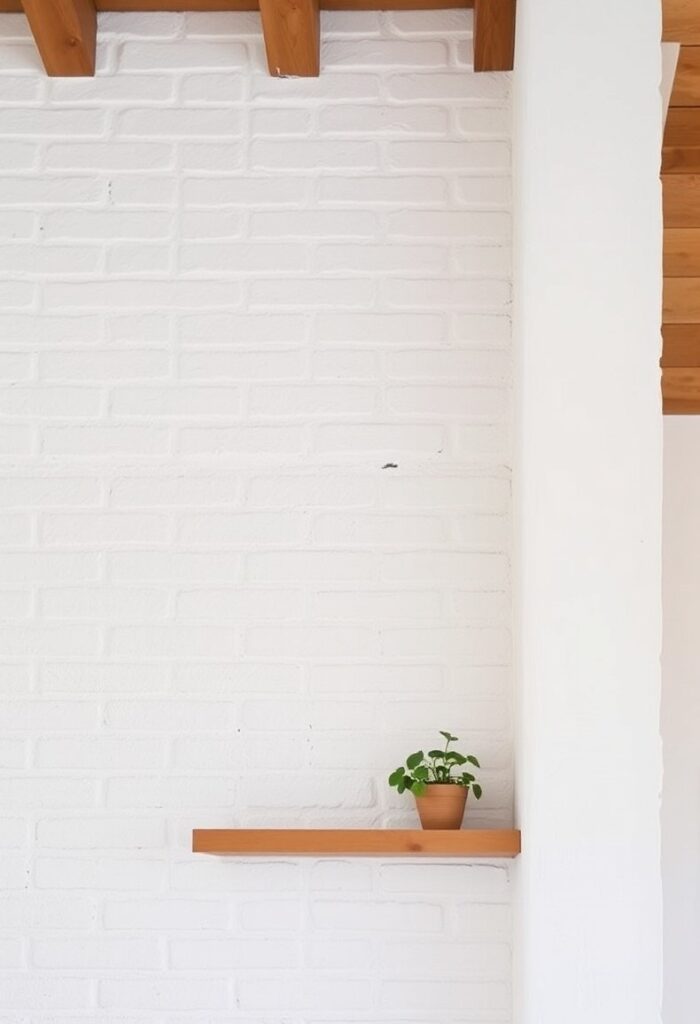
Create stunning contrast by pairing whitewashed brick walls with rich wooden elements. This combination balances the cool, textured surface of whitewashed brick with the warmth of natural wood tones. Consider wooden ceiling beams, floating shelves, or substantial furniture pieces against whitewashed brick for a design strategy that feels both grounded and sophisticated, blending rustic influences with refined elements.
11. Whitewashed Brick With Integrated Shelving
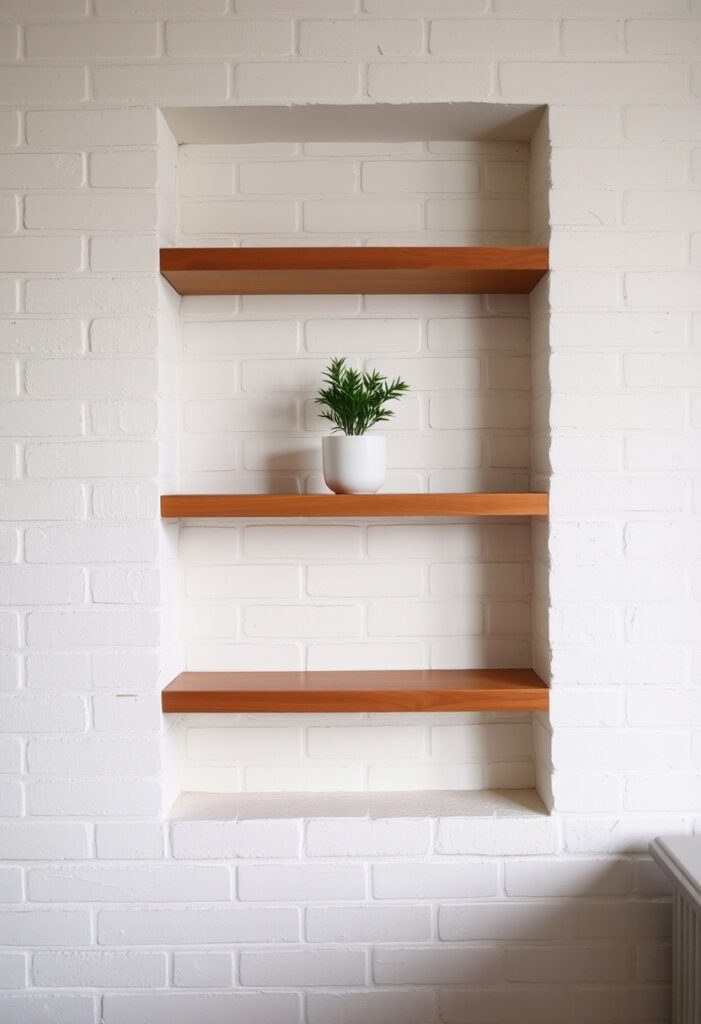
Design custom shelving systems that integrate directly into whitewashed brick walls for a built-in architectural feature. This approach combines form and function, allowing the textured backdrop to highlight displayed items while providing practical storage. The contrast between the soft whitewashed surface and objects on shelves creates visual depth, making collections and essentials part of your overall design statement.
12. Whitewashed Brick Kitchen Island
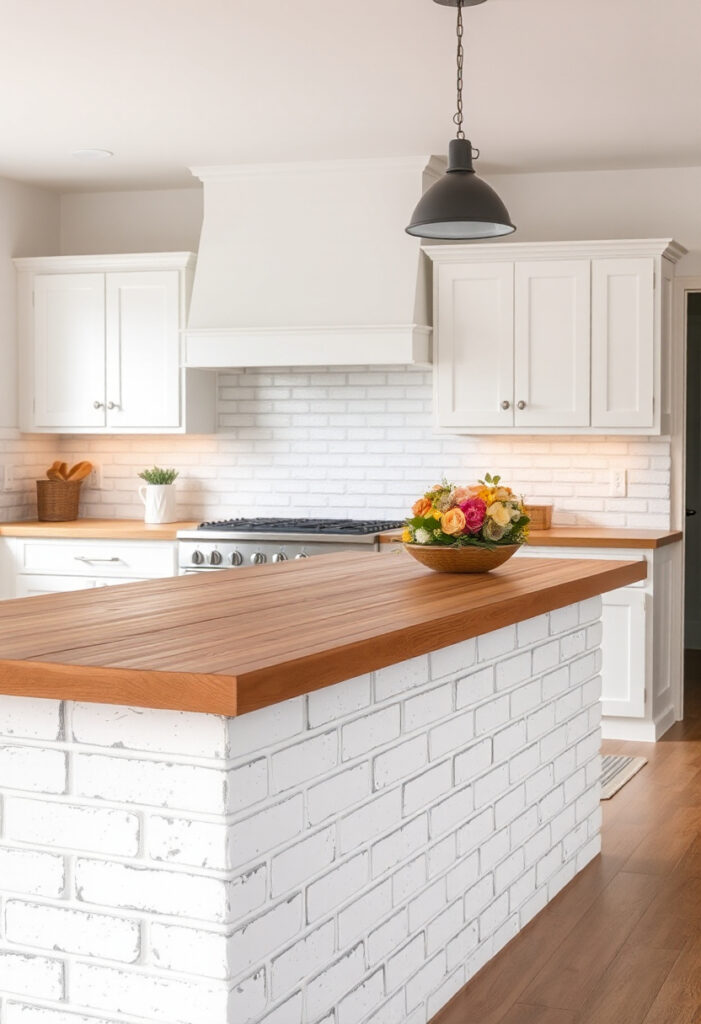
Wrap kitchen islands in whitewashed brick for a substantial centerpiece that resists wear and tear better than painted surfaces. This treatment brings architectural interest to the heart of the kitchen while providing a durable finish that improves with age. The textured surface hides scuffs and marks that inevitably occur in busy cooking areas.
13. Laundry Room Upgrade

Elevate utilitarian spaces with whitewashed brick walls that add unexpected sophistication to laundry rooms. This technique creates visual interest in a functional space without requiring elaborate decor. The light finish brightens work areas while the texture adds depth to typically basic rooms.
14. Whitewashed Brick Archways
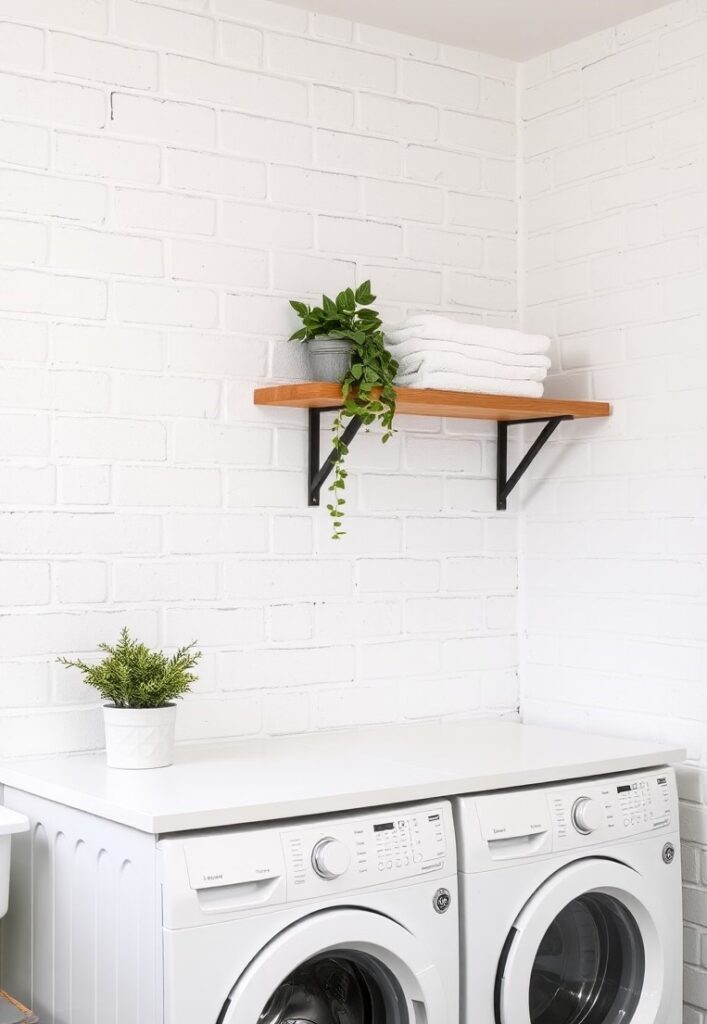
Highlight architectural transitions like archways or doorways with whitewashed brick detailing. This treatment draws attention to structural elements while maintaining visual flow between spaces. The subtle finish emphasizes the craftsmanship of curved brickwork without creating jarring transitions between rooms.
15. Whitewashed Brick With Strategic Lighting
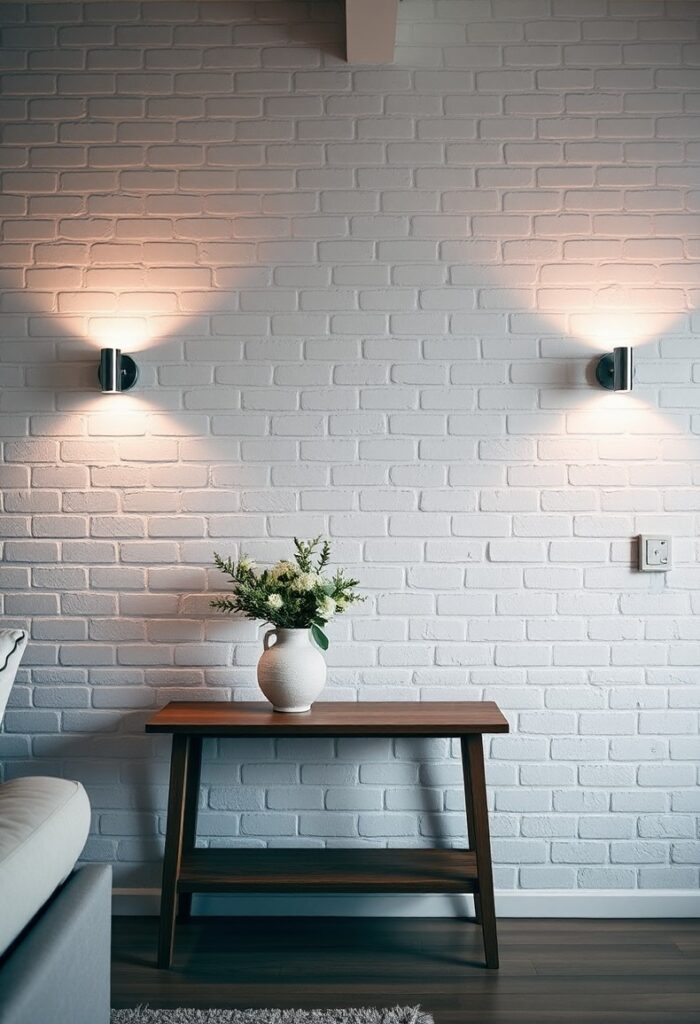
Transform whitewashed brick walls into dramatic design features with strategic lighting installations. Wall sconces, track lighting, or recessed spots directed at the textured surface create dynamic shadow patterns that change throughout the day. This lighting approach highlights the dimensional quality of whitewashed brick, turning a static wall into an ever-changing visual experience that enhances the overall atmosphere.
16. Whitewashed Brick Headboard Wall
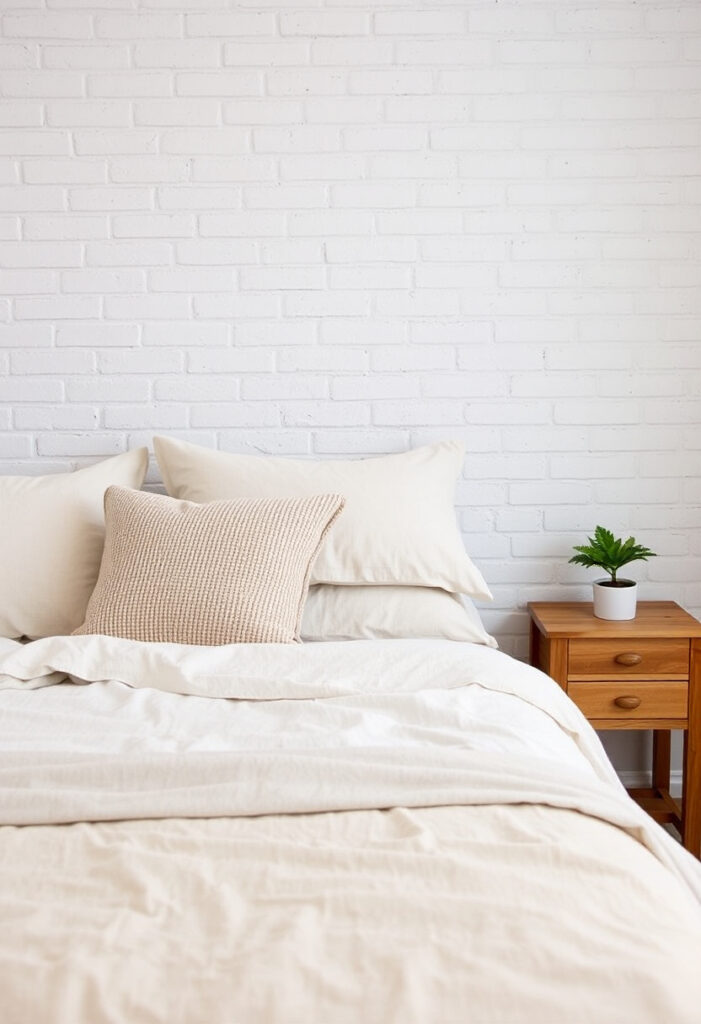
Design a sophisticated bedroom feature with a whitewashed brick wall behind the bed. This built-in headboard alternative adds texture without requiring additional furniture pieces. The soft finish creates a subtle focal point that works with various bedding styles and colors throughout seasonal changes.
17. Entryway Statement
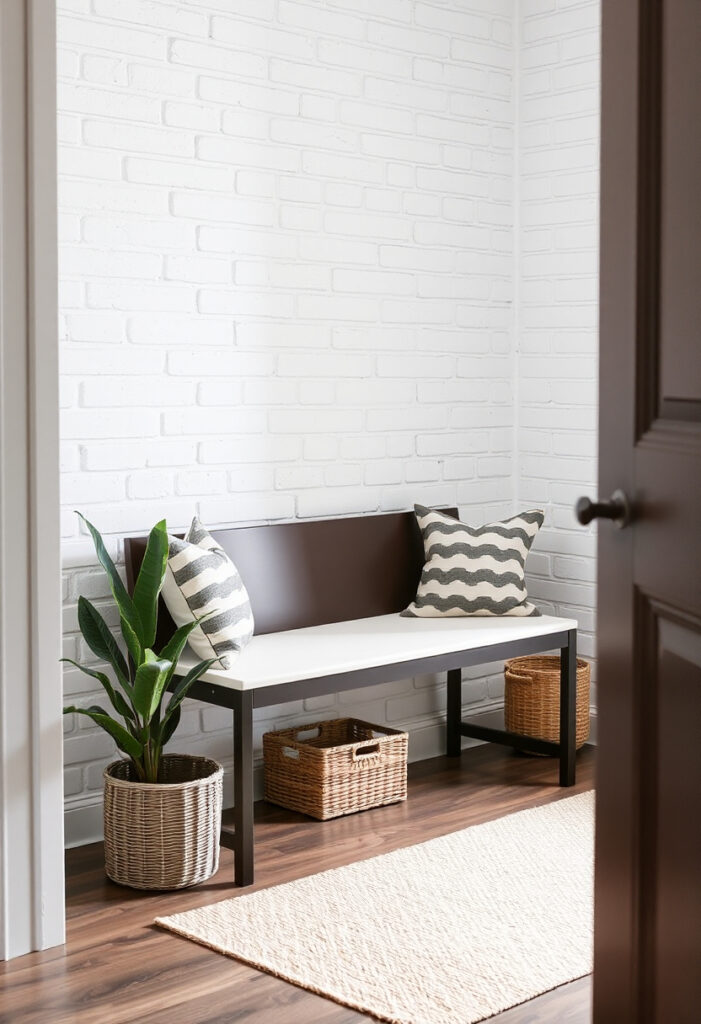
Make a memorable first impression with whitewashed brick in entryways or foyers. This treatment creates a welcoming transition from outdoors to interior spaces while establishing your home’s design personality immediately. The textured surface holds up well to the traffic of entry areas while maintaining its subtle beauty.
Tips for Achieving the Perfect Whitewashed Brick Look
Before embarking on your whitewashed brick project, consider these professional recommendations:
- Test in an inconspicuous area first to ensure you like the level of coverage and technique.
- Create depth by allowing some of the original brick color to show through rather than applying solid white paint.
- Use proper brick-specific products designed for porosity and adhesion on masonry surfaces.
- Consider the existing brick color when selecting your whitewash shade—warmer white tones often work better with red brick, while cooler whites complement gray brick.
- Apply in small sections with controllable amounts of product to achieve consistent results.
Maintaining Your Whitewashed Brick Walls
To keep your whitewashed brick looking fresh:
- Dust regularly with a soft brush attachment on your vacuum.
- Clean spots promptly using gentle cleansers appropriate for painted masonry.
- Touch up areas of heavy wear as needed rather than recoating entire surfaces.
- Seal high-traffic or splash-prone areas with appropriate clear masonry sealers.
Questions & Answers About Whitewashed Brick Walls
Is whitewashing different from painting brick?
Yes, absolutely. Whitewashing creates a translucent finish that allows the brick’s natural texture and color variations to show through, while painting covers the brick entirely with an opaque coating. Whitewashing preserves the character of the brick while softening its appearance.
Can I whitewash any type of brick?
Most brick can be whitewashed, but results vary depending on the original color and porosity. Red brick typically produces a warm, subtle whitewashed effect, while darker bricks may require multiple applications. Always test on a small area first.
Do whitewashed brick walls require special maintenance?
Whitewashed brick is relatively low-maintenance compared to other finishes. It may require occasional dusting and spot cleaning. In high-traffic areas, you might need to touch up the whitewash every few years, but many people appreciate the natural aging process of the finish.
Can I DIY whitewash my brick walls or should I hire a professional?
Whitewashing is a doable DIY project for most homeowners with basic painting skills. However, if your brick is in poor condition, very high up (like on vaulted ceilings), or if you want a very specific finish, professional assistance might be worthwhile.
How do I whitewash brick without making it look too white?
The key is to dilute your paint properly (typically a 1:1 ratio of white paint to water for a starter mix) and work in small sections, wiping away excess with a cloth as you go. You can always add more whitewash for greater coverage, but it’s difficult to remove once applied.
Will whitewashing brick affect my home’s value?
In most modern markets, tastefully whitewashed brick is considered a desirable feature that can enhance appeal. However, in historic homes or certain traditional markets, preserving original brick might be preferred. Consider your local real estate trends before making this relatively permanent change.
How long does a whitewashed brick finish last?
When properly applied and maintained, whitewashed brick can last 10-20 years before requiring significant refreshing. The finish tends to age gracefully, developing character over time rather than looking obviously worn.
Can whitewashed brick walls work in minimalist or contemporary homes?
Absolutely. While often associated with farmhouse or rustic styles, whitewashed brick provides textural interest that complements clean-lined contemporary spaces beautifully. The subtle dimension adds warmth to minimalist designs without introducing competing colors or patterns.
By incorporating whitewashed brick walls into your home, you’re embracing a design element that balances historical architecture with contemporary sensibilities. This versatile treatment brings texture, light, and subtle sophistication to spaces, creating backdrops that enhance rather than compete with your furnishings and decor. Whether you choose a statement wall or commit to whitewashing structural elements throughout your home, this technique offers enduring appeal that transcends passing trends.

